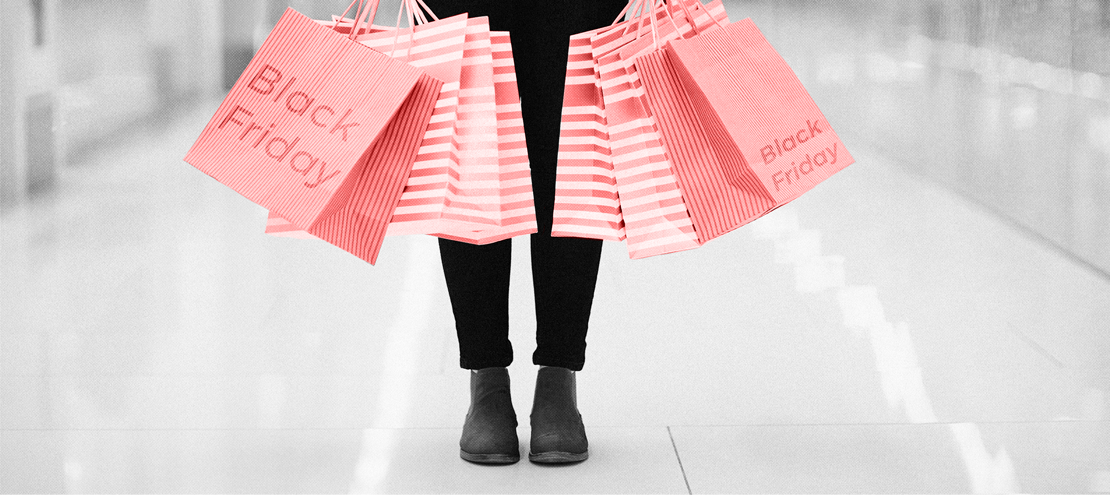Black Friday is synonymous with a crush of shoppers in stores vying for bargains. This year is different.
November has arrived. We switched the clock back, and holiday marketing is in full swing already. In fact, many marketers didn’t even wait until after Halloween to get the season started.
Become the best CRMer you can:
CRM Hack: measuring the right marketing campaign KPIs
How To: use loyalty data to power retention and reactivation
See how brands take their email deliverability to the max
Get inspired: great sports betting campaigns to follow
The attempt to push holiday marketing early happens every year, and so Black Friday has evolved and stretched to pretty much all of November over the past several years. Yet there were always some holdouts who would wait for the super deals on doorbuster specials available in stores only on the day itself.
Recollecting Past Black Fridays
That phenomenon is what prompted my father-in-law to get up before dawn to bring home two play kitchens for his grandchildren. I don’t recall what price he paid, only that he believed the savings to be worth the trouble.
It goes beyond saving $20. He enjoyed the thrill of the frenzied excitement surrounding Black Friday sale events.
As the National Retail Foundation (NRF) reported last year, “Thanksgiving weekend draws nearly 190 million shoppers, spending up 16 percent.” That year online shopping outstripped in store shopping: 142.2 million vs. 124 million.
There were always some traditionalists who like to see what they buy in real life and who expect better deals in stores. That’s particularly true for those of older generations who are loath to order online ever.
However, many of us are capable of crossover. Last year, 75.7 million shopped both online and in stores. Those shoppers tended to spend around 25% more than those who stuck to only a single venue.
New for 2020
This year, though, likely the figures will shift to more online shopping and more shoppers completing their purchases before the big weekend still referred to as Black Friday. The challenge for retailers will be not to lose out on the sales that shoppers would come into stores for at a time when people are still skittish about crowds.
However, adapting to the reality of life under a pandemic when many stores were closed for months forced even a lot of the old-school shoppers to embrace the ease, convenience, and safety of online shopping.
That shift is going to reshape Black Friday 2020. Even if stores wanted to revert to the old model, the concerns about rising cases this season and the general advice not to pack a lot of people together means there is no concentrated shopping frenzy at most retailers.

Spreading Out the Savings, Not the Virus
There is some variation in how they are implementing these plans. Business Insider looked at how three big names are handling it differently in Walmart, Target, and Best Buy have revealed their Black Friday plans, and they’re all radically different from prior years.
It reports that Walmart’s strategy is to set out the sale earlier online than in stores. Its start the day before Thanksgiving at 7 p.m. ET. The sale in stores will only kick off on Saturday at the traditional ungodly hour of 5 AM.
While the start time is not unusual for that shopping event, it will not be Black Friday just moved to Saturday. Walmart assures shoppers that it will limit the number of people allowed in the store at one time.
Best Buy comes closest to a traditional Black Friday with stores opening on the day itself at 5 AM. However, it said it will have rolling sales earlier in November with nothing held back from its Black Friday specials as of the Sunday before.
As we saw in The Prime Directive for October, Target announced its plans for replacing Black Friday in-store sales with earlier sales, a plan it published back in the summer. Pushing for earlier orders is key to assure people that there is ample time for deliveries to come through, particularly when there will be more online orders to process and ship out.
That’s why the NRF called for what it called “a new tradition” with a campaign called Shop safe, shop early. The interesting question for retailers and marketers down the line is whether this shift will carry over in the future or if we will ever revert back to frenzied crowds on Black Friday.
The post This Is Not Your Father’s Black Friday appeared first on Post Funnel.



